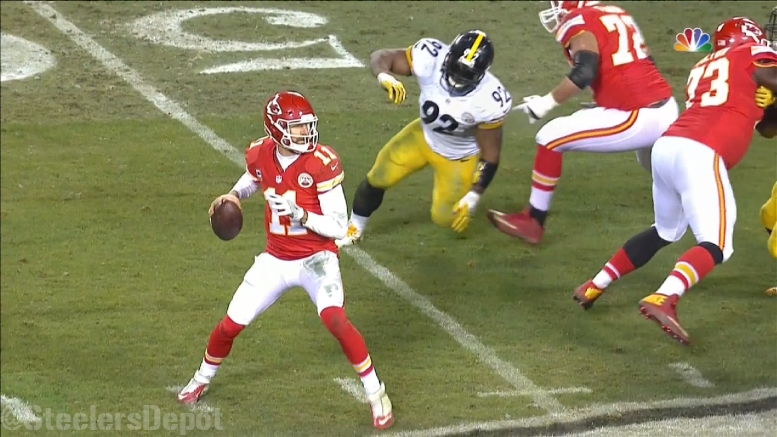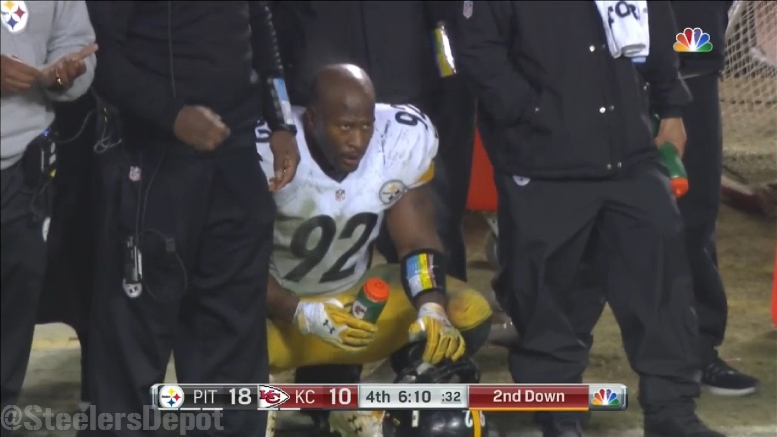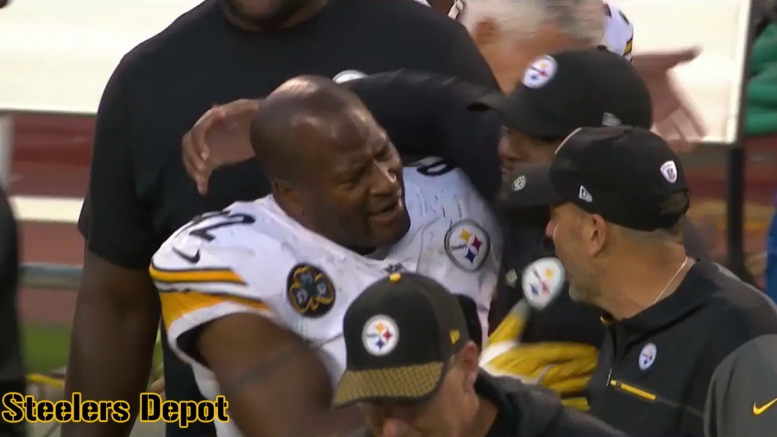It has now been three seasons since the Pittsburgh Steelers recruited James Harrison out of retirement and back onto the gridiron as a member of the team’s defense. Originally a one season stop-gap solution to help beef up the outside linebacker position, Harrison has been a fixture of the Steelers’ defense for the last three seasons and will be a vital piece for the upcoming.
While Harrison will continue to battle father time with his unorthodox workout routines, an interesting bit of information reveals itself in the previous three years’ worth of battle that the Steelers outside linebacker has faced against father time.
A quick glance at Harrison’s production highlights a remarkable consistency across his last three seasons. With 15 total sacks during his previous three campaigns, Harrison has been a regular contributor for a defense that has seen a profusion of change. And while Harrison’s consistency across his late thirties challenges the perception of aging in the National Football League, his home and away splits are even more challenging to process.
In Harrison’s first two seasons back with the team, all 10.5 of his quarterback sacks occurred while playing on Heinz Field. But the narrative of Harrison’s home field strength takes a swift turn when looking at his 2016 production as four of his five total sacks occurred while the Steelers were on the road. For such a contrasting change in production throughout the years, perhaps there is an answer or two for Harrison’s road warrior play over the course of last season.
The obvious answer lies in Harrison’s increased playing time following the demotion of former Steelers outside linebacker Jarvis Jones following the team’s heart-breaking loss to the Dallas Cowboys. Harrison would go on to start the team’s next six games before sitting out the season finale against the Cleveland Browns. Due to a late season road stretch, Harrison and the Steelers would play four of these six games on the road, giving the outside linebacker ample amount of opportunities to get to the quarterback. Now compare this to the team’s first nine games where Harrison was not a starter and the team enjoyed five home games, and you can begin to see that this shift in production has much to do with opportunities.
Perhaps a less obvious but another possible reason for Harrison’s rare road production is the level of competition he faced during the 2016 season. Harrison notched his four road sacks against the likes of Cleveland Browns rookie guard Spencer Drango, Indianapolis Colts tight end Dwayne Allen and Baltimore Ravens rookie tackle Ronnie Stanley. Each of these players offer their own tale of the tape as to why Harrison was able to outmatch them last season.
Drango was a rookie on a Browns offensive line that ranked first in the NFL with 66 sacks allowed. The rookie guard also struggled in pass protection as his 72.6 Pro Football Focus grade for pass blocking ranked 57th out of 71 ranked guards last season.
Though a tight end, Allen was part of a Colts offensive line that finished in the top five for most sacks allowed last season as the line allowed 44 sacks as a unit. Pro Football Focus also was not very kind to Allen, as his 43.2 pass blocking score ranked 47th among all tight ends, giving him the second lowest pass blocking score among all ranked tight ends last season.
There are few words of negativity to describe Stanley, as the Ravens rookie tackle was not only named the AFC North rookie of the year by ESPN but his pass blocking grade over the final six games of last season ranked first among all tackles according to Pro Football Focus. Harrison’s two sack performance against Stanley came before the rookie tackle started receiving high praise from analysts, as their matchup came during week 9. This was Stanley’s first game back from a foot injury that had forced him to miss the previous four games and his rust created an obvious advantage on Harrison’s side.
While Harrison’s splits look to be the result of a possible witch doctor who only grants him the ability to produce either at Heinz Field or on the road, the reality of the situation is less farfetched. Harrison’s rare road production last season likely boils down to increased playing time down the stretch and his capability to capitalize on weaknesses displayed by the opposing offensive lines.








